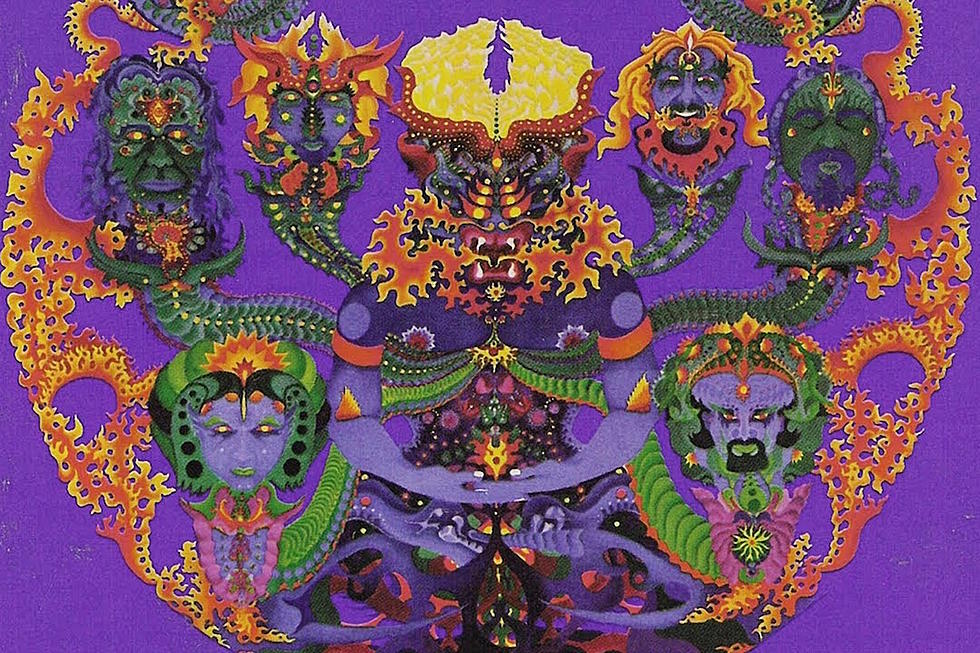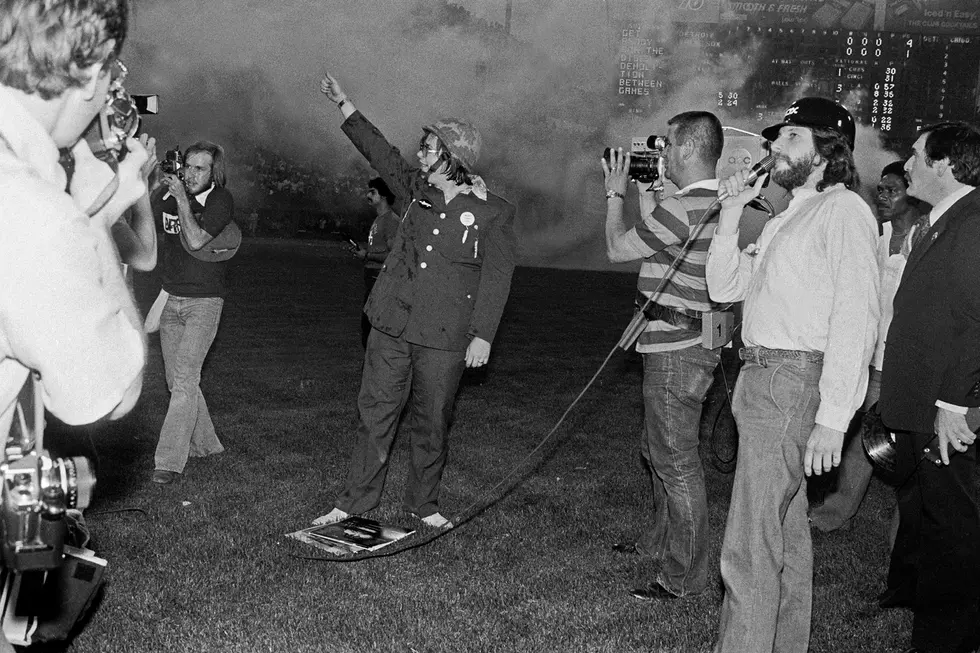
55 Years Ago: Grateful Dead Hint at the Future With ‘Aoxomoxoa’
Already legendary for their live chops, the Grateful Dead had become more at home in the studio by the time they released Aoxomoxoa on June 20, 1969.
Their 1967 debut was a classic snapshot of the early San Francisco era – a straightforward, no-frills recording of the band. On their second, Anthem of the Sun, the Grateful Dead dove head first into the idea of using the studio as an instrument, combining live recordings with studio tracks in order to make an aural collage. When it worked, Anthem of the Sun was brilliant; when it didn't, the album could be a bit disjointed.
With Aoxomoxoa, they came to terms with the constraints of a recording studio – as well as the resilience. Technology played a role.
READ MORE: Top 10 Grateful Dead Shows
The Grateful Dead originally set up camp in late 1968 at Pacific Recording in San Mateo, Calif., to begin work on the album, later finishing at San Francisco's Pacific High Recording. The availability of a 16-track studio offered much more room to play with the ideas in their collective head. "The mix down became a performance in its own right, with three or more pairs of hands on the soundboard, minding their cues,” keyboardist Tom Constanten said in the book Skeleton Key.
Just as important, however, was the new collaborative spark being generated by Jerry Garcia and lyricist Robert Hunter, a partnership that would ultimately lead to a series of Dead classics like "Friend of the Devil" and "Truckin'," among others.
Aoxomoxoa kicked off with "St. Stephen," which set the tone. The sound here is sharper and more direct than the previous album, but not without a certain cosmic glow about it. "St. Stephen" would be a live staple for years to come. Next was "Rosemary," a sweet, yet eerie, track. While the acoustic guitar tracks weave in and out of each other, the vocals are run through a Leslie speaker to give them a surreal quality that suits the song perfectly.
"Doin' That Rag," a sprightly folk-rocker, mapped out the direction the Grateful Dead would soon take on their next two studio albums, Workingman's Dead and American Beauty. Ron "Pigpen" McKernan's organ playing adds a very Blonde on Blonde-era Bob Dylan feel. The group is as focused as they'd ever be in the early days, capturing a nice bridge between the cerebral and the earthy.
Listen to the Grateful Dead's 'St. Stephen'
The Wild Studio Tales of 'Aoxomoxoa'
One of the Grateful Dead's most beautiful songs follows in "Mountains of the Moon," as acoustic guitars shimmer over Garcia's plaintive lyric and a bed of harpsichord. It is psychedelic without any of the garish trappings of a 26-minute jam.
"China Cat Sunflower," an important part of seemingly every Grateful Dead concert from 1968 through the very end of the road, looms large in the band's legend. There is a lot more going on here than first meets the ears. The rhythms are intricate, yet immediate, while Garcia's guitar snakes its way from top to bottom and back again. Wonderful harmonies, nestled thick in the mix, take the song to a different level altogether. It also serves as a showcase for the dual drumming of Mickey Hart and Bill Kreutzmann.
"What's Become of the Baby," meanwhile, is the most out-there track on the album – a haunting work, and an example of the Grateful Dead's confident new footing in the studio. There is no instrumentation here at all. Garcia said he wanted the sound of the entire band to come through, using only voices. Garcia's vocals are put through the effects ringer to create an otherworldly, acid-washed sound.
In fact, according to Dennis McNally's A Long Strange Trip, the band was very stoned while recording Aoxomoxoa. "On top of everything else, they brought nitrous oxide tanks into the studio and truly lost themselves in the mix," McNally said. The nitrous created a "telepathic thing that's fantastic," Garcia added.
"Cosmic Charlie" is, on one hand, a great way to end the journey. At the same time, though, this country-tinged, Rolling Stones-y finale seems almost out of place. Nevertheless, the Grateful Dead develop a solid, yet simultaneously loose groove, one that surges along in a more or less straightforward fashion with some stellar guitar flourishes along the way. And, even if it doesn't quite fit into the larger dynamic of Aoxomoxoa, "Cosmic Charlie" certainly provides another hint at the rootsy path in store over their next two outings.
Listen to the Grateful Dead's 'Mountains on the Moon'
Why Was the Album Called 'Aoxomoxoa'?
The story of Aoxomoxoa, however, doesn't end there. Garcia and bassist Phil Lesh returned in 1971 to remix the project. That added more clarity to certain songs but also, it seems, diminished some of the quirky attitude of the original version.
Meanwhile, "Barbed Wire Whipping Party" – a free-form track from the Aoxomoxoa sessions that didn't make the final track listing – would become semi-legendary over the years. Best described as a chemical-fueled experiment, its Hunter-penned lyrics include these whacked-out gems: "The other day I went to Mars and talked to God, and he told me to tell you to hang tight and not worry. The solution to everything is death, the barbed wire whipping party in the razor blade forest. Sweet live meat, my fangs could unravel you." Garcia once quipped that it was "one of our better atrocities."
The LP title itself has been the subject of much conversation over the years, though it turns out that the meaningless Aoxomoxoa was simply conjured by cover artist Rick Griffin, who had a fascination with palindromes. (The Grateful Dead had originally intended to call this project Earthquake Country.) Much later, rumors began to abound that a five-year-old Courtney Love was among those pictured on the album's back cover. This legend likely grew out of her family history, since Love's father Hank Harrison was a hanger-on in the Grateful Dead's early days.
Aoxomoxoa ultimately stayed on the Billboard chart for 11 weeks but only climbed to No. 73 – despite a humorous Warner Bros. promotional campaign involving the blues-loving McKernan called the "Pigpen Look Alike" contest, in the style of teen magazines like 16. No matter. For Garcia, the Grateful Dead were inching ever closer to capturing something essential in the studio.
He would eventually call Aoxomoxoa "one of my pet records, 'cause it was the first stuff that I thought was starting to sound like how I wanted to hear songs sound."
Legends Who Never Had a No. 1 Single
Gallery Credit: Nick DeRiso
A Grateful Dead Member Is Part of Rock's Tragic '27 Club'
More From Kool 96.5










